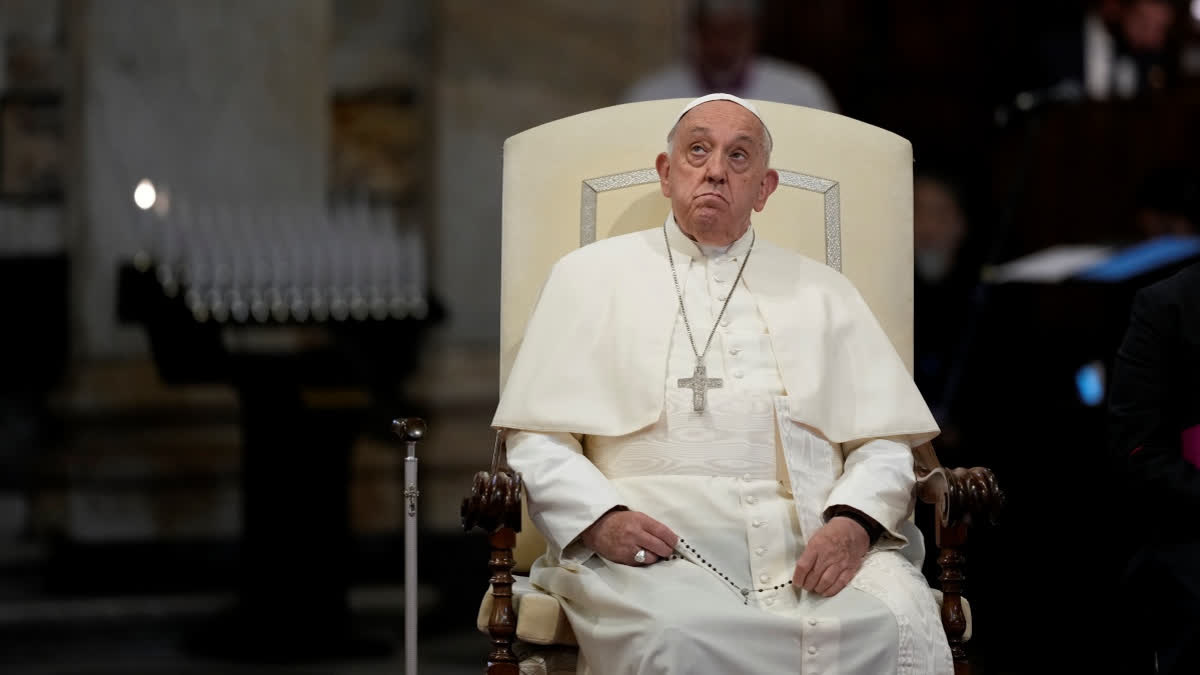The death of a pope triggers an elaborate and ancient set of rituals and protocols, rooted in Catholic tradition, sacred law, and centuries-old symbolism. This process, designed to ensure a smooth transition of power within the Roman Catholic Church, involves everything from strict secrecy and rituals in the Sistine Chapel, to the famous white or black smoke seen rising above the Vatican.
The Period of “Sede Vacante” – The Vacant See
When a pope dies, the Catholic Church enters a period called “sede vacante”, meaning the seat is vacant. During this time, the papal office is officially unoccupied, and no major decisions can be made until a new pope is elected.
The death is first confirmed by the Camerlengo, or Chamberlain, who oversees the administrative and financial operations of the Holy See during this transitional period. He also seals the papal apartments, formally ending the reign of the deceased pontiff.
Currently, this position is held by Cardinal Kevin Farrell, an Irish-born American cardinal.
Who Runs the Vatican After the Pope Dies?
Most Vatican officials immediately lose their posts upon the pope’s death, with the exception of a few critical roles. Among those who remain are:
-
The Camerlengo
-
The Vatican’s Secretary for Relations with States (foreign minister)
-
The Master of Liturgical Ceremonies
The Dean of the College of Cardinals, currently Cardinal Giovanni Battista Re, becomes responsible for organizing the funeral, leading the Masses, and preparing for the election of a new pope.
The Papal Funeral and Mourning Rituals
The pope’s funeral is a solemn and symbolic event. The coffin is placed in St. Peter’s Basilica for public veneration. The funeral takes place between the fourth and sixth day after the death, followed by a traditional nine-day mourning period, known as the “novendiali.”
In 2024, Pope Francis simplified the rites for his own funeral, emphasizing his role as a bishop of Rome. He requested to be buried at the St. Mary Major Basilica, near the icon of the Virgin Mary (Salus Populi Romani).
Timing of the Conclave
Once the mourning period is underway, cardinals from around the world begin arriving in Rome. According to the rules, the conclave—the election of the new pope—must begin between 15 and 20 days after the pope’s death, though it can begin earlier if all eligible cardinals are present.
Who Elects the New Pope?
Only cardinals under the age of 80 are eligible to vote in the conclave. According to current Vatican statistics, no more than 120 cardinals may vote, although sometimes the number slightly exceeds due to recent appointments.
Cardinals over 80 years of age do not vote but may participate in pre-conclave discussions, known as general congregations, where they discuss the challenges facing the Church.
Theoretically, any baptized Roman Catholic male could be elected pope, but since 1378, only cardinals have been chosen.
Potential Candidates for Pope
Several cardinals are considered strong contenders to succeed the pope. Notable figures include:
- Cardinal Pietro Parolin (Italy): Secretary of State and experienced Vatican diplomat
- Cardinal Luis Antonio Tagle (Philippines): Head of the Vatican’s missionary office
- Cardinal Matteo Zuppi (Italy): Leader of the Italian bishops and close to Pope Francis
- Cardinal Christoph Schönborn (Austria): Theological student of Pope Benedict XVI
- Cardinal Marc Ouellet (Canada): Former head of the bishops’ congregation
How Is the Pope Elected?
The conclave is held inside the Sistine Chapel. The cardinals swear an oath of secrecy, and outside communication is strictly forbidden. The first vote takes place after the opening Mass, followed by up to four votes daily—two in the morning and two in the afternoon.
Voting is conducted using special rectangular ballots. Each one is marked with the words “Eligo in Summum Pontificem” (“I elect as Supreme Pontiff”), followed by the cardinal’s chosen name.
Votes are collected, read aloud, counted, and if no candidate receives a two-thirds majority, the ballots are sewn together with a needle and thread, then burned.
Smoke Signals and Final Result
After each round of voting, the burned ballots produce smoke that rises from the chimney of the Sistine Chapel.
- Black smoke signals no decision has been made
- White smoke signals a pope has been elected and accepted the position
To avoid confusion, chemical cartridges are added to the ballots to make the smoke clearly black or white. Additionally, bells are rung when a new pope is chosen.
The Moment of Announcement
Once a cardinal receives the necessary two-thirds majority and accepts the role, he chooses a papal name. The senior cardinal deacon then appears on the central balcony of St. Peter’s Basilica and proclaims: The new pope then steps forward to deliver his first public blessing, officially beginning his papacy.
Secrecy and Safeguards
Pope Benedict XVI strengthened the rules of secrecy around the conclave. Anyone revealing what happens inside faces automatic excommunication. Participants must swear a sacred oath not to disclose any details and to refrain from using any recording devices.
Liturgical assistants, secretaries, and technical staff all sign this oath, declaring they understand that any breach will incur excommunication reserved to the Apostolic See.



 Bhartiya Bhasha Utsav 2025: Celebrating ...
Bhartiya Bhasha Utsav 2025: Celebrating ...
 Starlink Internet: Revolutionising Globa...
Starlink Internet: Revolutionising Globa...
 Google 2025: Top Searches by Indian User...
Google 2025: Top Searches by Indian User...







